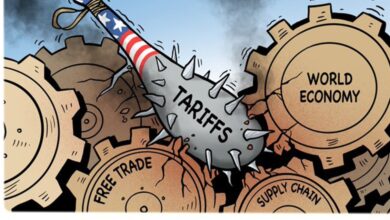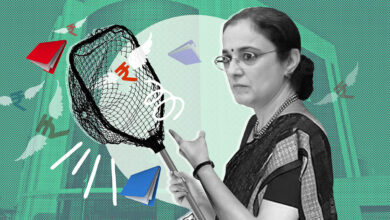If Indian Judiciary Leaves Corruption, India Might Become Heaven in Just 180 Days
“There shall be a Supreme Court of India”
There shall be a Supreme Court of India constituting of a Chief Justice of India and, until Parliament by law prescribes a larger number, of not more than seven other Judges. Article 124 of the Indian Constitution guarantees the formulation of an Independent Supreme Court in India. The Chief Justice of India is appointed by the President of India on the recommendation of the Judges of Supreme Court and High Courts. The Judiciary is an independent pillar of India’s democracy. It holds the Executive and the Parliament in check and vice versa, the other two branches, however, doesn’t challenge judiciary so often practically. The highest court of appeal dispenses justice with the motto of- Satyamev Jayate. But the question is, does the truth always win? Does the Indian Judiciary practices what it preaches?

Indian Cinema has numerous adaptions of rigged judicial verdicts, these depictions don’t come merely from an imaginative mind, but are a representation of how things work under the wraps. Judiciary is seldom answerable for dispensing justice what it deems fit. The media, however, keeps a close watch on the political participants, but judiciary escapes the purview of the media. The Judiciary is not held publicly accountable for major verdicts or prolonged court proceedings. They say justice delayed is justice denied, guess, the judiciary took Sunny Deol’s Tareek par Tareek to next level.
Why isn’t the appointment of Judiciary transparent like the other organs?
The appointment of the Chief Justice is done by the President on the advice of the Collegium and usually, the senior-most Judge of the Supreme Court becomes the CJI, however, this norm has also been surpassed before. The appointment of the judges in the Judiciary is done by the President on the recommendation of the Chief Justice of India. This is where the appointment becomes dubious and all-inclusive. Whereas, on the contrary, the political leaders are not selected but democratically elected. The Judiciary, however, is based on this autocratic appointment so that it is not influenced by the Parliamentarians.
However, there is a lack of transparency in this appointment. The constitution itself maintains that the Judiciary is a singular independent organ. But, what makes the matters worse is this singular independence itself, this is because no one holds them responsible. Since the Judiciary is also the custodian of the Indian Constitution, it can declare any law or policy unconstitutional if it is against the basic structure of the Constitution. This has been noted the 44th Amendment of the Indian Constitution removed Right to Property from the list of the Fundamental Rights. It also maintained that the Parliament cannot amend the basic doctrine of the Constitution as Golaknath Vs State of Punjab ruling was given.
No one can question apex court
The Supremacy of the Indian Judicial system sometimes seems autocratic. There is a bottom-up hierarchy of the single judicial system. This means that a petitioner can appeal in a higher court of appeal if he/she is not satisfied with the ruling of the lower court. Likewise, the Supreme Court is the highest court of appeal. If the ruling isn’t fair in the Supreme Court, the petitioner needs to satiate him/herself with that ruling. The pressure of the right-ruling is bestowed on the shoulders of the Bench or a singular Judge but at the same time, it increases the scope of corruption as well.
The Judge that rules the verdict cannot be questioned by the public. Where the office of the Chief Justice now comes under the Right to Information act, the judgements cannot be still questioned. This increases the scope of under the table talks and exchanges. This doesn’t imply that all the judicial representatives are corrupt but a large number of them are. A judge renders a judgement based on the available shreds of evidence in a case. The Indian Judicial system doesn’t work on the principle of jury-decision like in the US. Therefore, the sole fate of the defendant lies in the hands of one person and no action can be taken against wrong judgements. The lack of the ability to question the decision-maker does dent the evolution of the Indian Judiciary.
Considering the case against the late CM of Tamil Nadu, J. Jayalalithaa Disproportionate Income Case, 3 verdicts came out. In the first verdict, she was found guilty and arrested in September 2014. On moving to a higher court which is Karnataka High court, judge Mr Kumaraswamy had set her free. The case was then moved to the Supreme Court of India where she was found guilty. Sadly, by the time the verdict came out, she had passed away. V. Sasikala, her inheritor and also a convict was arrested right away.
Time-consuming even the fast track courts take time
The final verdict of the Jayalalithaa case was announced on February 2017, but the case was charged in 1996. It took 21 years for the final verdict to come out. It has been rightly said that justice delayed is justice denied. The Judicial System of the largest Democracy on earth isn’t what it claims to be. Instead of serving the people, the judiciary serves its latent motives. Till date, there is a backlog of more than 3.5 crore cases in India that are still in pipeline in various Indian courts. The Chara-Corruption Case which brought the embezzlement of 9.5 billion into daylight against the ex-Bihar supremo Lalu Prasad Yadav took 16 years to reach its final stage. The CBI took 16 years to file charges against Yadav to put him behind bars.
The Nirbhaya case, the most unfortunate gangrape of a 23-year old medical student also took turns. The case was registered in 2012 itself, the 6 convicts were also found and tried by the judiciary. Out of them, one convict was a minor and (16 at the time), therefore he was sent to the juvenile detention centre and was scot-free in 2015 as he came of age. Is that justified? Does a minor get the right of raping and murdering a woman? Can minors not be held responsible for heinous crimes like these. The remaining convicts were sentenced to death and were hanged in March 2020, 8 years after the demise of the fearless, Nirbhaya.
The not so fast, fast track courts were introduced in 2000 in India. There are as many as 1734 in India until 2011. Last year Smriti Irani had proposed to set up 1030 new2 fast track courts under POSCO Act.
Loopholes in Indian Judicial System
Just like any evolving nation, India’s Judicial system does have many legal loopholes that hide the corrupt nature of the protectors of the law. In 2010, the Law Ministry had disclosed that as many as eight of the sixteen chief justices of India were corrupt and had compromised with justice. A source from the Supreme court said that the CJI had to compromise and let a judge of a High Court Continue in the office even though he was corrupt. One of the major loopholes is that there is no provision in the constitution to register a case against a judge who has taken bribe without the permission of the CJI. Since it is not feasible for a poor man to go and visit the CJI and then register the FIR. The judges are hardly questioned about nature of justice as he or she does what they deem fit as per their legal knowledge.
The cases which involve the executive are treated very differently than that of a common person. In the case of the former, the judiciary has to maintain its independent image in the public, since those cases can be a landmark in the history of the country. the judiciary rejects many pleas of the government based on the altering the nature of the constitution. The basic structure of the constitution cannot be amended but this basic structure is vaguely defined in the Constitution itself. There is no proper mention of this basic structure and it depends upon the interpretation of the Judiciary. Along with that, the overload of pending cases as old as the riots of 1984 adds to the loopholes and the incapacity of the judicial system. The unitary nature of the judicial system kills the scope of agility injustice. Therefore, to get a quick judgement on a case, bribery has become very common.
Accused under trial is another major loophole of the judicial system. Under this an accused is jailed even before the judgement is pronounced. Many innocent and falsely accused people end up becoming a victim of this provision. Sometimes, they end up serving a longer term than the court awards them for the crime due to delay in case hearing.
Divine Idea of Justice
The idea of justice has always been godly in India. The King in kingdoms and the Panch in villages were given the status of Parameshwar in India. This is because, it is believed that only can dispense actual justice, therefore, the person dispensing justice on earth is a sign of divinity. The notion of divine justice is what still keeps the average Indian away from objecting it. Even today in many Indian cultures, the impetus is given to the local panchayat than the judicial system of the country. the 73rd and the 74th Amendment incorporated the formalisation of Gram Panchayat as a civic body in India because even the then supremo Rajiv Gandhi understood the cultural gravity of local panchayat.
The same idea of divine justice restricts the people from questioning the final judgement. People at least in rural areas still consider the idea of justice dispensed by an authoritative entity and follow the judgement. Lack of questioning and undue privileges have further led to the corruption of the Judicial System. The divine idea of justice has been maligned by its practitioners to a level when a sizeable population within the country has lost their faith in the judicial system. This corruption has been rooted to such extent that it has reached even the grassroot level of village panchayats.
Nexus of Judges and Politicians
As it has been known that Executive and Judiciary are interdependent, the basis of an existing nexus of Judges and Politicians is very much possible. Therefore, whenever petitions against the executives are filed, that is straight away heard in the Supreme Court. This provision calls for collusion of the participants of these organs. Another notable factor is that during the UPA government no landmark judgement was passed, however, after the 2014 elections, a series of landmark judgements were given making Judiciary more just than it is. This trend continues in 2020, recently two landmark judgements have been given, one related to the caste-based reservation and the other related to the inheritance of property by daughters.
Another notable factor is that the ruling party that made the government gave a Rajya Sabha ticket to the ex-CJI Ranjan Gogoi out of the blue. This also tells about the ideological and favour-based nexus that the politicians and judges share. A large number of crime suspects run for MLA’s and MP’s to make themselves politically strong so that they influence the Judiciary and to some extent, they succeed too.
The Indian Judiciary is highly corrupt because of the loopholes of the system. The complex nature of the judiciary makes it even more difficult for an average citizen to understand. This only leads to one option of turning a blind eye to the hidden corruption and collusion that the Indian judicial system has become symbolic of. If the corruption of judiciary is ended then India can become a superpower because that would create fear in the working of the executive sand the parliamentarians. At present all three organs have bought the fourth pillar of democracy and together, they are fooling the average Indian.




